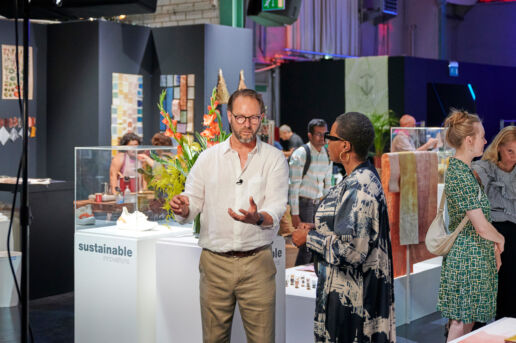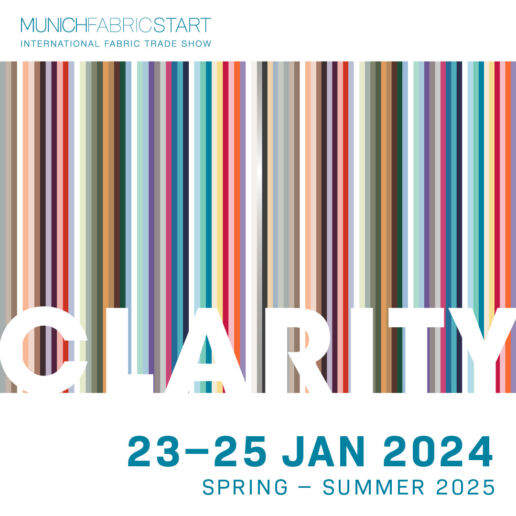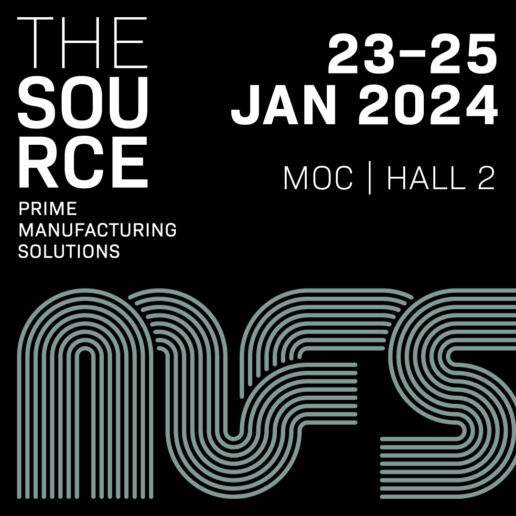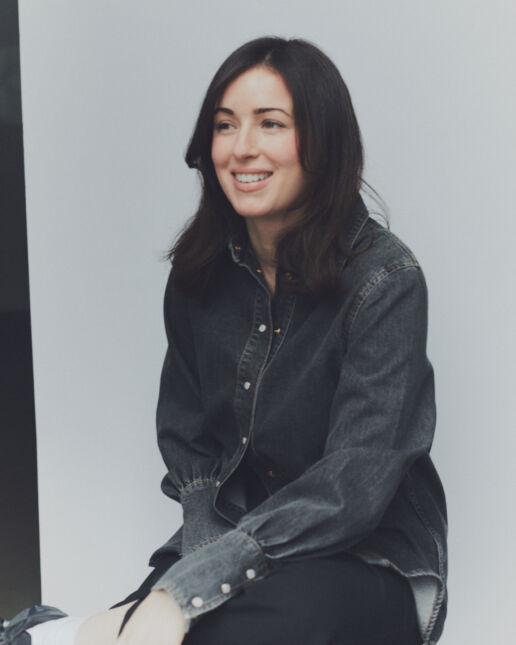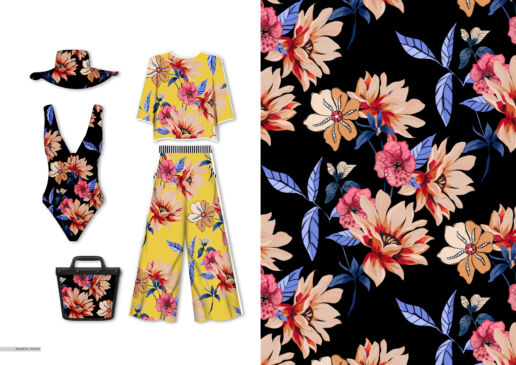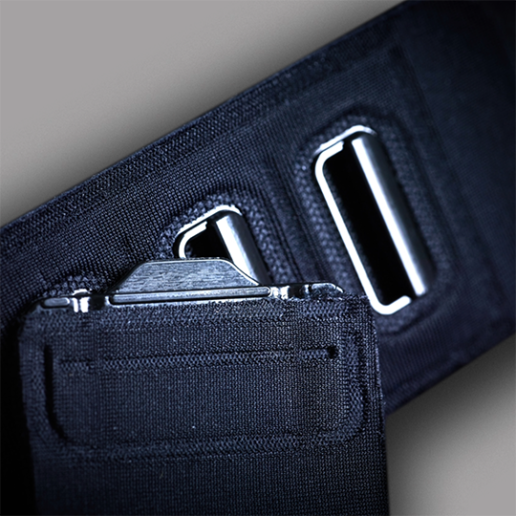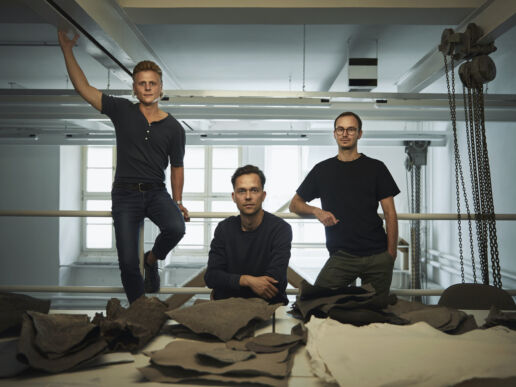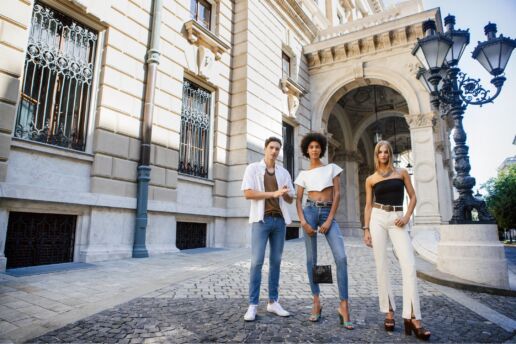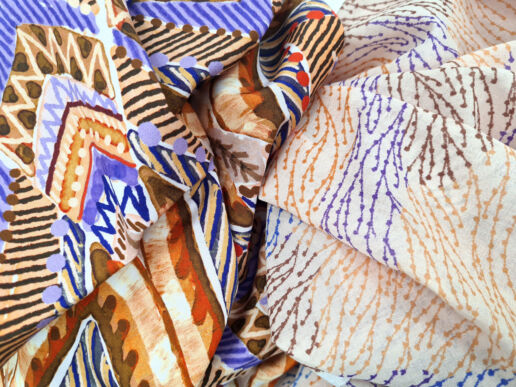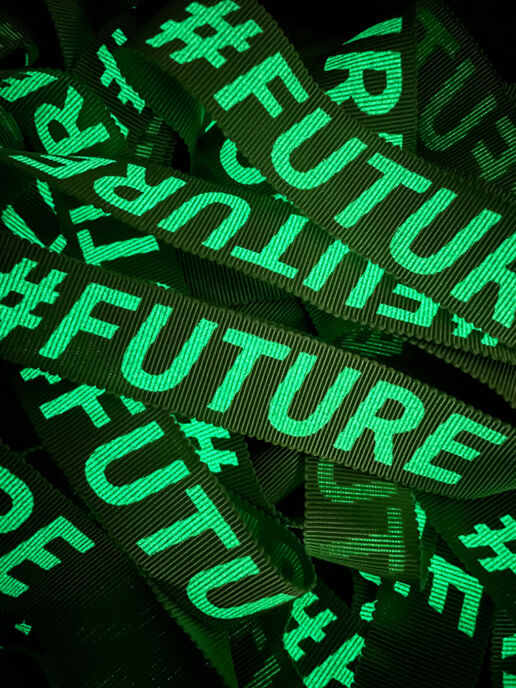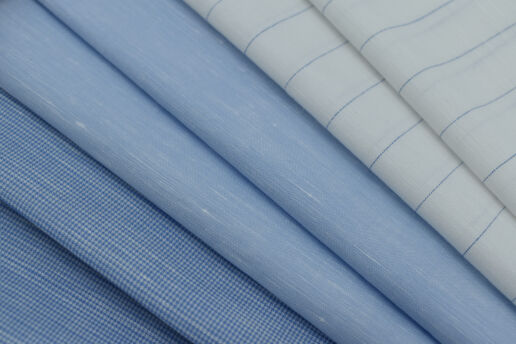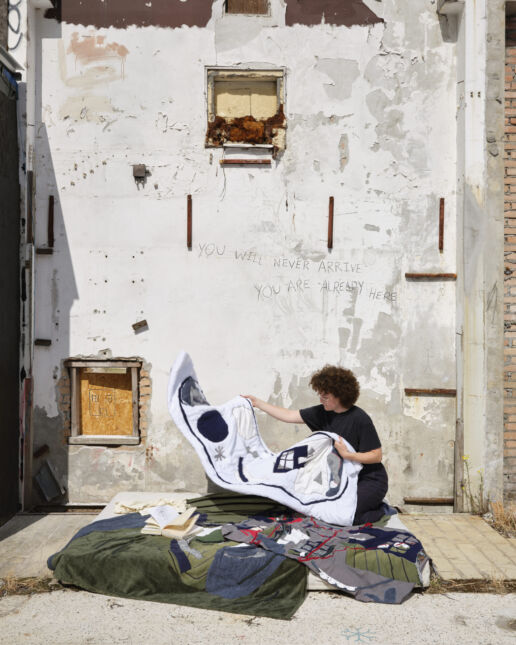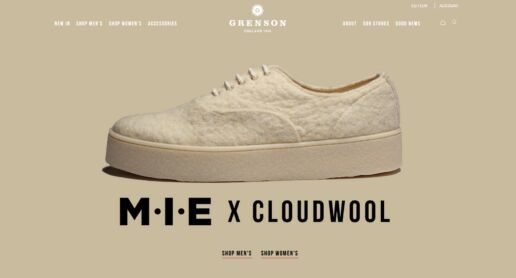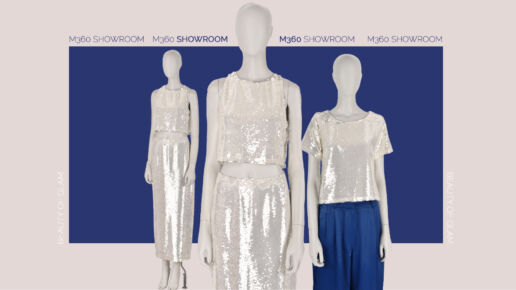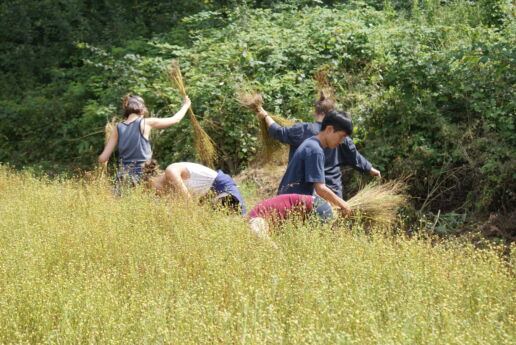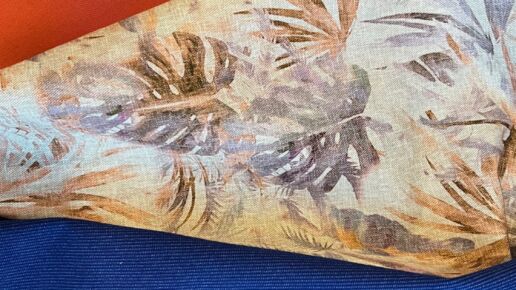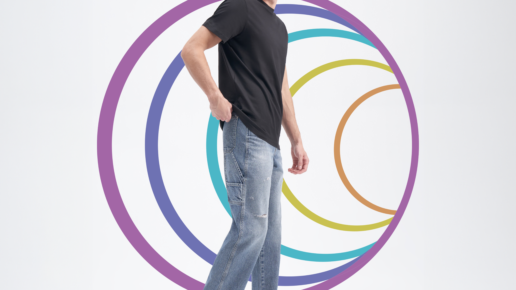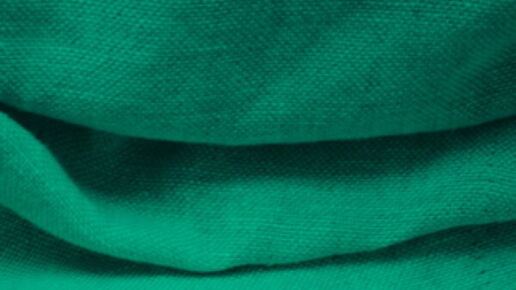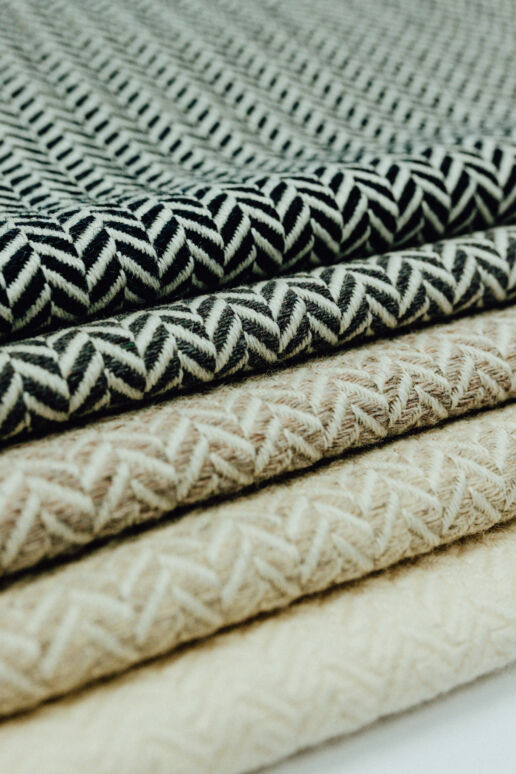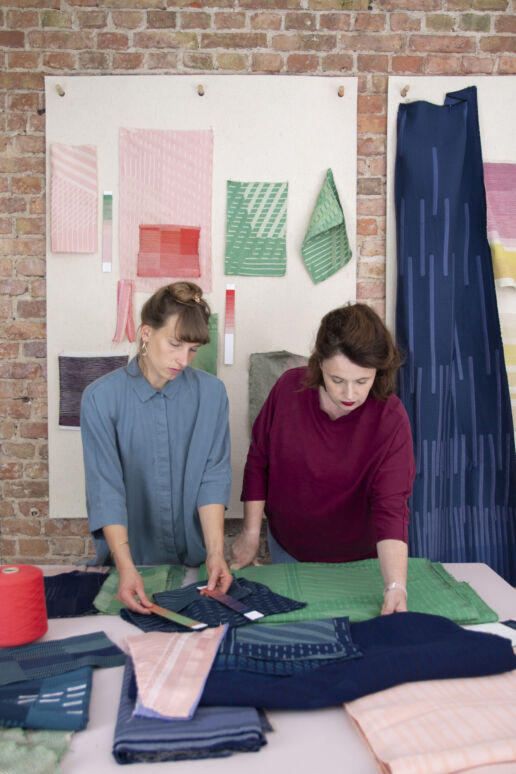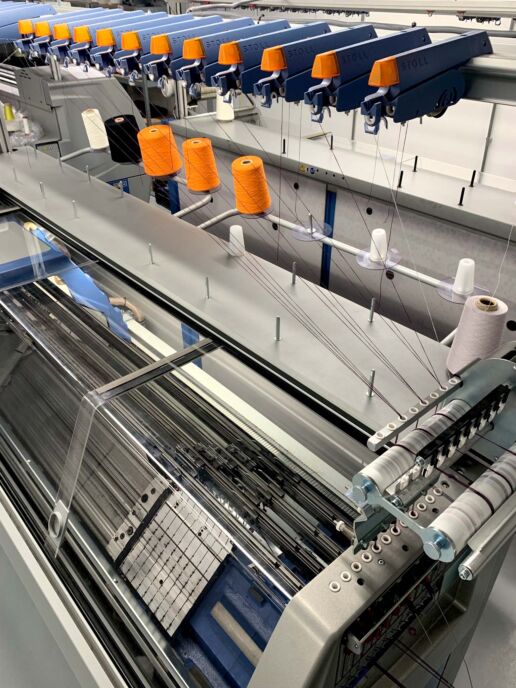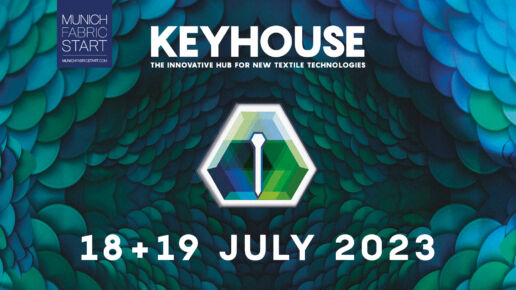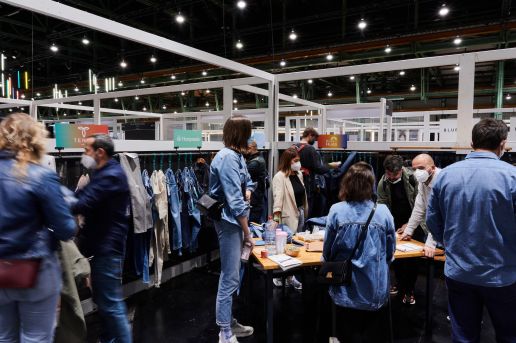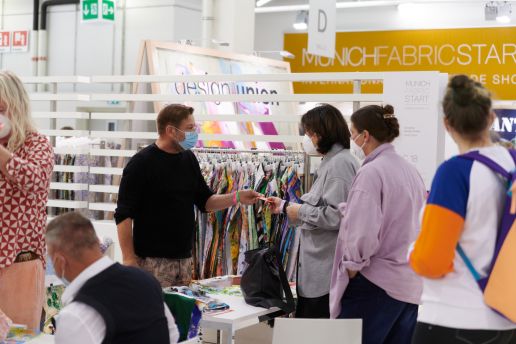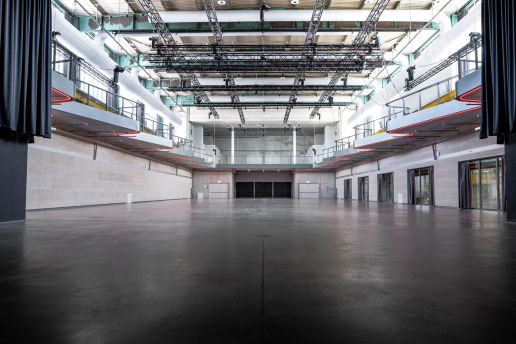Keyhouse
Diversity in Dynamics
Marvelling at the levels of sophistication and innovation modern fabrics have attained and continue to breach, it is easy to forget that our relationship with textiles is one of the most intimate and primal ones we have. Granted, today’s creations are (thankfully) far removed from the scratchy cloth our ancestors wore huddled around the fire.
But over the course of time, our relationship with textiles has changed. While we have – technically and commercially – never been closer to textiles, ambitiously engineering fabric compositions to cater to an increased demand of sustainability, for instance, we are ironically also stepping further away emotionally from what was once – literally – closest to us. Today, our engagement with textiles is largely dependent on the prism through which we choose to experience and value it:
We have increasingly come to approach textiles as objects of research and science, questioning what characteristics new fabrics ought to have and how existing textiles can be improved to comply with the ever-changing demands of the market. Impressive examples of such science-led approaches are two projects within the BIOTEXFUTURE-cluster, led by the Institute for Textile Technology (ITA) and the Chair for Technology and Organizational Sociology (STO) at RWTH Aachen together with their industry partner adidas. Within BIOTEXFUTURE, they investigate the transition of the textile value chain to bio-based materials, including alternatives to conventional elastane (CO₂Tex), or the establishment of bio-based polymers in the industry (BIOBASE).
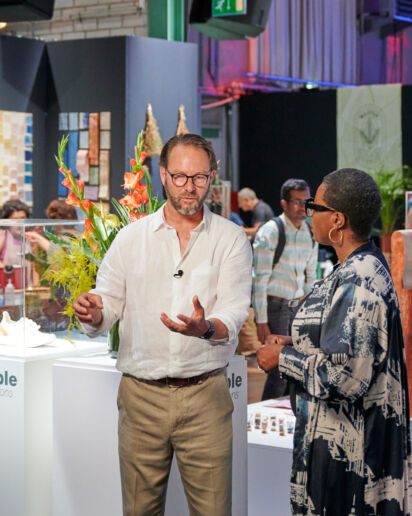
Of course, textiles also lend themselves to in-depth material exploration, analysing intricacies of production and means of (p)rethinking and challenging standards. Think of leather and its unique characteristics – who would have thought something strikingly similar could be crafted from a hemp plant, as illustrated by Lucas Fuhrmann’s “Revoltech”? Or going so far as to almost brutally decontextualize a biomaterial like feathers from their original purpose of insulation, submitting it completely to the functionality of aesthetics, as Suzanne Corcessin has done with “Being Plucked”.
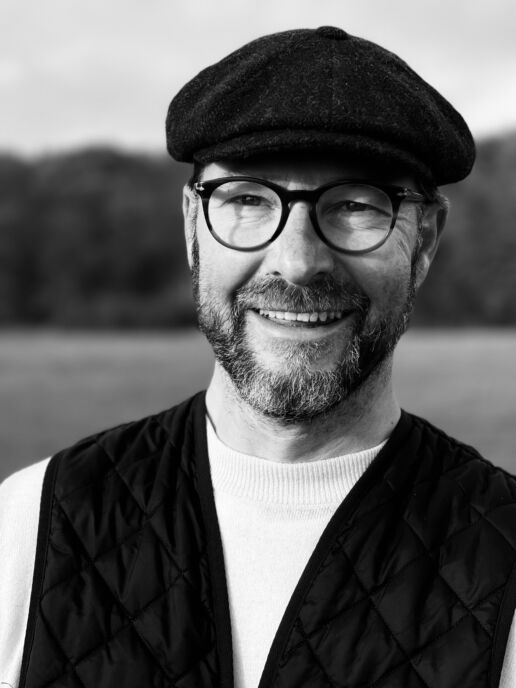
Simon Angel
And still, textiles can be a means of social connection – looking at the emotional component of fabrics, their functionality and the effects they have on others in public and private interaction, reconstructing relationships and the marriage between human and textile. Beautiful testaments of such exploration are the works of Paul Schaffer, whose collection of woven fabrics aims to foster appreciation for the interconnectedness of organisms, Sophie Conroy, who investigates the metaphysical significance of textiles as a connection between the body and the environment, and Elizabeth Balado’s “Blooming Minds: Social Printing”.
Are we leading or following completely different dynamics? Are we at risk of sacrificing artistic intimacy for scientific progress? Are we winning or losing touch? It’s not about being right or wrong, but a question of prism. The Sustainable Innovations Forum proves that it is possible to navigate these different dynamics. Take Cloudwool, for example: with a diverse portfolio and numerous opportunities to work with their product, they have attracted the attention of the likes of Grenson and Balenciaga, effectively demonstrating that it IS possible to unite the different dimensions of soul and science, while successfully positioning their product at the same time.
Feel the difference in dynamics for yourself – come and meet us in the KEYHOUSE and experience the Sustainable Innovations Forum.
Best wishes,
Simon
INFORM & INSPIRE YOURSELF AT THE MUNICH FABRIC START
IN THE SUSTAINABLE INNOVATIONS AREA IN THE KEYHOUSE – H5!
Discover more industry-changing innovations at our upcoming trade fairs:
GANNI – Fashion made from next-gen materials
Munique magazine contributor Muchaneta ten Napel, recently had the opportunity to sit down with Lauren Bartley, the Chief Sustainability Officer at GANNI to dive into the brand’s sustainable initiatives and vision for the future of fashion.
Muchaneta ten Napel (MTN): “Lauren, can you share with us GANNI’s journey towards sustainability and how it’s integrated into your brand’s ethos and fashion design?”
Lauren Bartley (LB): “Absolutely, Muchaneta. It starts with our founders Ditte and Nicolaj, who are personally passionate about the topic of sustainability and hacking the fashion system – it’s at the core of everything we do at GANNI and has been key to our progress in the area. In 2019, we created our first sustainability strategy the GANNI Game-plan comprised of 44+ goals to reach by 2023 surrounding People, Planet, Product and Prosperity. In 2022, we completed our first strategy and became a B Corp Certified company and now we are well in to our second strategy Game-plan 2.0, running until 2025 – which creates further impact to our business model and operations.”
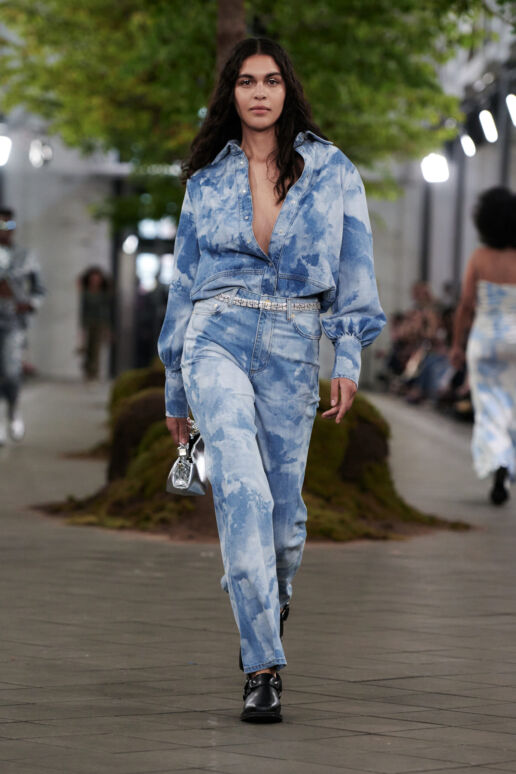
Future Denim Shirt med in Circulose® by Renewcell – a natural material made via textile waste, and Circulose®, which transforms textile waste into a new material without the need for cotton fields, oil, or trees
Our GANNI Bou bag in Ohoskin, made from orange and catus 100% Ohoskin (48% plant-based content, 52% Recycled Plastics)
Photo by Mathias Nordgreen
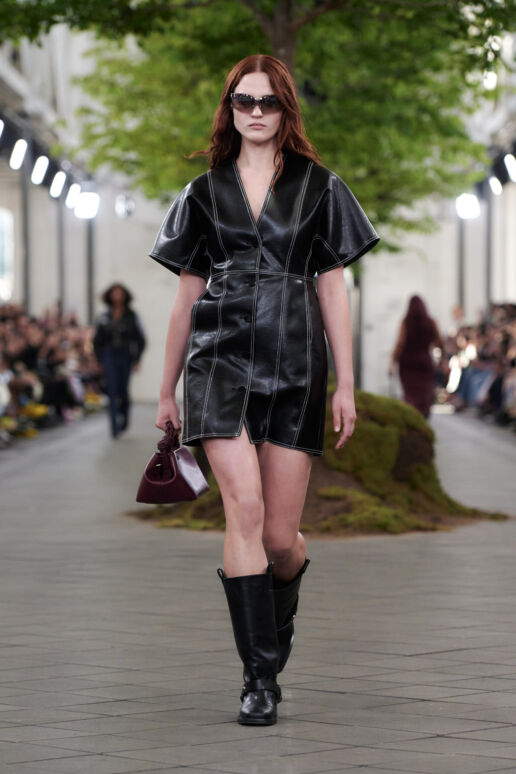
Dress in Oleatex – a plant-based olive leather alternative made from waste streams from olive oil production.
Our GANNI Bou bag in Ohoskin, made from orange and catus 100% Ohoskin (48% plant-based content, 52% Recycled Plastics)
Photo by Mathias Nordgreen
M.T.N.: “What are the unique challenges and opportunities you’ve encountered in incorporating next-generation materials into GANNI’s collections?”
L.B.: “The opportunity is to re-think fashion as we know it and empower our designers to do what they do best – get creative – and create something beautiful. We’re committed to working with fabric innovation as it’s the only way we will reach our ambitious carbon reduction goals – a 50% absolute carbon reduction by 2027. By 2025, 10% of our collections will be made from Fabrics of the Future. There are obviously challenges too, especially around scalability and the commerciality of the materials and that’s why it’s so important for us to invest and encourage other brands to invest too, because we all desperately need the solutions the innovators are offering. Commercial viability, but it’s essential to invest in these innovations.”
M.T.N.: “How has GANNI’s experience been in piloting new textiles on a smaller scale, and what impact has community feedback had on these initiatives?”
L.B.: “We will always introduce a new fabric innovation through a pilot project, to test and learn and get feedback from our community. So far, the response has been extremely positive. For us it’s about seeing these next-gen materials as something new and not comparing it to existing materials and fabrications.”
M.T.N.: “Navigating the costs and investments in sustainable materials is crucial. Can you discuss GANNI’s approach?”
L.B.: “Its early days, for now we have piloted around 10 material innovations, but the challenge is really to scale them to a commercially viable status. The pilots are an investment for GANNI, with no clear return on investment, that is not a sustainable model for any company and that is why we need these innovators to succeed and for GANNI to do whatever we can to help make it possible. We will have Renewcell’s Circulose in our main collections in 2024 and scaled and it’s exciting to see how that resonates with our community.”
M.T.N.: “Could you share insights into GANNI’s strategies for circular fashion and waste management?”
L.B.: “As part of our Game-plan 2.0 and commitment to Circularity, we have a goal of 5% of revenue coming from circular business models by 2025 from a 2021 baseline. With our Circular Business Models we look at new business models that have potential to reimagine the fashion industry as we know it. Currently, we are revising the Circularity strategy and will be sharing more on our goals within the pillars ‘Designed for Circularity’, ‘Recycling’ and ‘Circular Business Models’ in early 2024.”
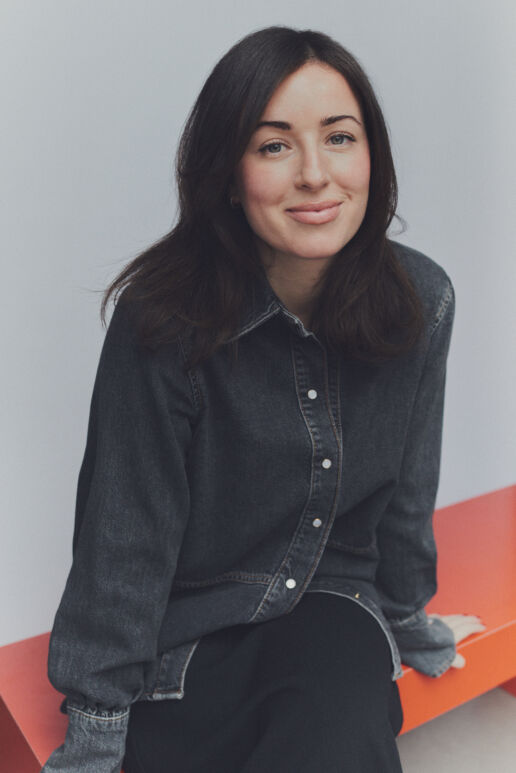
M.T.N.: “How does GANNI approach consumer education regarding sustainable fashion?”
L.B.: “Our biggest communication channel on Responsibility is our instagram account @GANNI.Lab where 100% of the feed is dedicated to our journey in becoming the most responsible version of ourselves. This is very much about what GANNI needs to do and where we are on our journey and does not put the onus on the end consumer. With all our communication we try to speak to our community in a meaningful and honest, not perfect way, showing the hard stuff, the stuff we didn’t get right, as much as we show the stuff we nailed.”
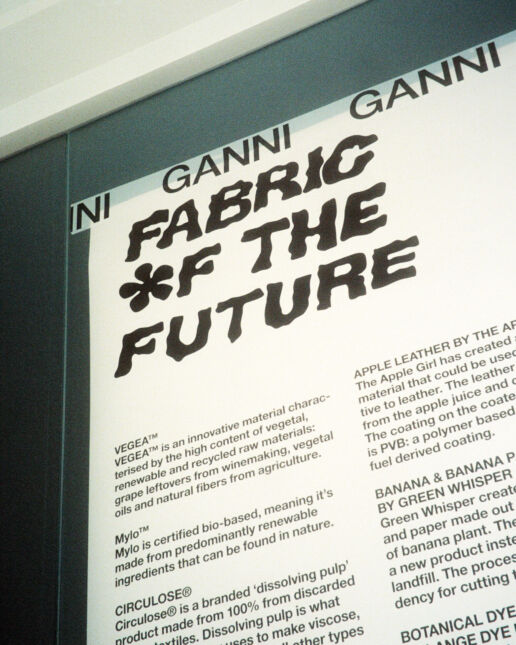
M.T.N.: “In the context of forming partnerships, what insights can you share about GANNI’s collaborations?”
L.B.: “We believe in the power of industry collaboration, no brand will succeed in a sustainable transition alone. GANNI works with over 30 material innovators and 13 partners and software solutions to help us progress on environmental sustainability, social sustainability and traceability. We would not be where we are without our partners.”
M.T.N.: “As the Chief Sustainability Officer, what is your vision for the future of sustainable fashion?”
L.B.: “For me, the onus is on the brands to offer more sustainable solutions to its customers – whether that be more responsible fabrics, transparent supply chains, workers paid a living wage and the adoption of new business models such as resale. We cannot force people into sustainable fashion, but by making it convenient, accessible and raising the education and awareness of some of the challenges and ultimately solutions in the industry, we can encourage more responsible consumption and behaviour. It’s a brave endeavour for a brand to recognise their own shortcomings, but being transparent, being honest and not perfect solidifies the value and integrity of the company- which ultimately, we can all appreciate as consumers”.
Are you interested in more in-depth facts and figures on the new textile industry?
Visit the Shape Innovate Lounge in H5 | 04 or take part in the mini-lectures in the Keyhouse.

About the author
Muchaneta Ten Napel is the founder of Shape Innovate, a company that critically examines the economic impact of the fashion industry and publishes comprehensive, data-driven research, white papers and forecasts that shed light on the fiscal dynamics of both fast fashion and sustainable fashion practices.
In addition to running Shape Innovate, Muchaneta is the driving force behind FashNerd.com, her own digital platform dedicated to the latest tech developments in the fashion industry. As well as writing for her platform, she has also contributed to Vogue Business and is currently a senior contributor at The Interline.
Muchaneta is a lecturer at London College of Fashion (UAL), has taught at Conde Nast College of Fashion and UCL and has held a workshop at Zurich University of the Arts to share her extensive knowledge.
With extensive industry experience, Muchaneta is also a fashion innovation consultant and has authored in-depth research for companies such as LVMH Atelier.Muchaneta, who was actively involved with the UNFCC and Climate KIC during COP27, is now Chair of the Cultural and Creative Industries (CCI) Taskforce for the UN Climate Change Global Innovation Hub.
To further expand her influence, Muchaneta hosted the Innovation Stage at the Global Fashion Summit in Copenhagen and is a board member of the Fashion Innovation Center, where she contributes her strategic insights to further revolutionise the industry.
Muchaneta ten Napel | m@shapeinnovate.com
This might be also interesting for you:
DESIGN STUDIOS – SPRING.SUMMER 25 I
14. March 2024
Their collection is inspired by the latest catwalks, Copenhagen street style and consumer trend reports.
Fabric Trends Spring.Summer 25 – Part III
12. March 2024
They are crafting high-end fabricsby embracing minimalism and precision and combine exceptional functionality with collective responsibility and prioritize the development of degradable materials with a minimal ecological footprint.
Revoltech – Sustainable Innovations
7. March 2024
The revolution of Revoltech lies in the use of Hemp-Leder, an advanced fusion of hemp fibers and traditional leather.
BLUEZONE Signature Spring.Summer 25 – Part I
5. March 2024
IBIZABLUE is a bright and vibrant shade inspired bythe summer season. This unique colour allows fora range of washes that maintain their vitality, evenafter multiple wash cycles.
Fabric Trends Spring.Summer 25 – Part II
27. February 2024
It's safe to say that a return to joy and lightness is in the air in the world of fashion!
The latest accessory developments for Spring.Summer 25 – Part I
22. February 2024
A big part of the collection consists of natural fibers with super light ribbons in 100% cotton, a linen braid-effect ribbon and hemp ribbons for a sustainable-oriented collection.
Fabric Trends Spring.Summer 25 – Part I
20. February 2024
It reflects the longing for positivity and offers new graphics, colours and weights. Summer is the perfect time to show character and put the shirt at the centre of the outfit. centre of the outfit.
A Life As An Art Project – Sustainable Innovations
15. February 2024
Textiles, for Sophie, become a medium that provides protection while revealing the vulnerability of the self.
CLOUDWOOL – Sustainable Innovations
13. February 2024
In a time where natural wool is often imported and blended with synthetic fibers, Cloudwool relies on local resources and fights against the neglect of local sheep farmers' wool.
THE SOURCE 2024 – Spring.Summer 25 – Part II
8. February 2024
Some 30 selected clothing manufacturers present their products and services around the latest sourcing services and apparel manufacturing at THE SOURCE studio in hall 2.
A cultural heritage - Sustainable Innovations
Flax was traditionally grown as a crop in the Netherlands, and Dutch linen was one of the most sought-after for a long time because of its good quality. Today that is no longer the case. Therefore, in 2018, Crafts Council Nederland, in cooperation with the Fashion Design Master of ArtEZ University, initiated ‘The Linen Project’ to revive the economic viability of local flax cultivation and linen production in the Netherlands, while transforming it in a sustainable way.
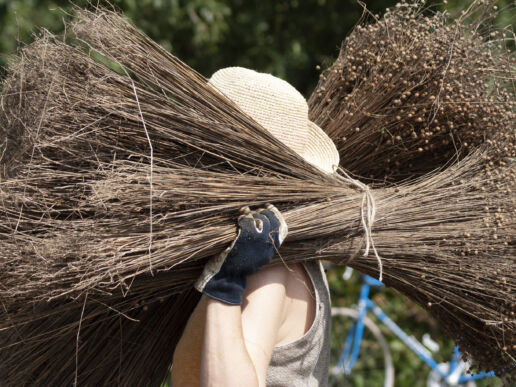
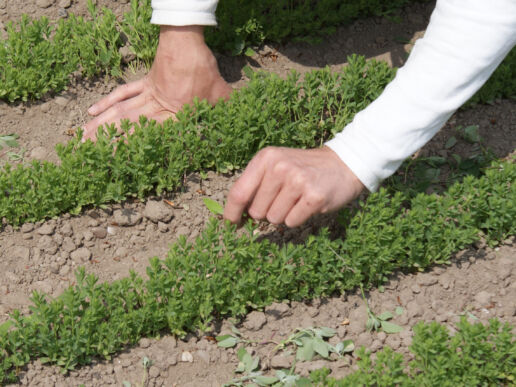
The Linen Project aims to change and challenge thinking in a multidisciplinary way across fields and sectors – agriculture, history, heritage, (landscape)
architecture, fashion, food, crafts, design, contemporary art, economics, innovative business. After all, the whole world is changing. On the one hand, people are more digitally connected to each other than ever before. But at the same time, there is a growing interest in connecting to the products we use and consume every day and how they are made. How and where are our roots? How can we reconnect with deep human values and ancient knowledge and skills? The Linen Project explores the tradition of linen production in the Netherlands and drives the exchange of different values, knowledge, skills and competences across industry boundaries.
Learning by doing is the motto of the project: prototypes of new economic, social and cultural ecosystems are created in a dynamic environment, demonstrating the vital importance of (biological) diversity. The production process involves only four steps – the flax from 2019, for example, was grown on the Lingehof near Arnhem (NL), mechanically processed by Van de Bilt Zaden en Vlas in Sluiskil (NL), spun in Poland and woven into linen by Enschede Textielstad in Enschede (NL). In the process, “old” knowledge meets new technologies, so that future production is based on and builds on a restored connection between people and nature.
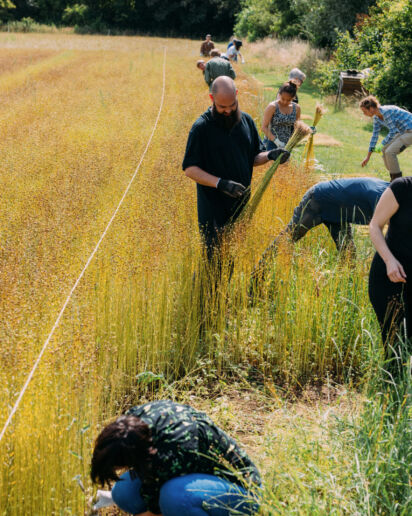
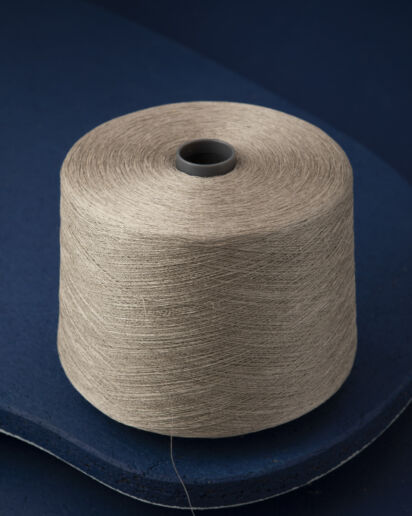
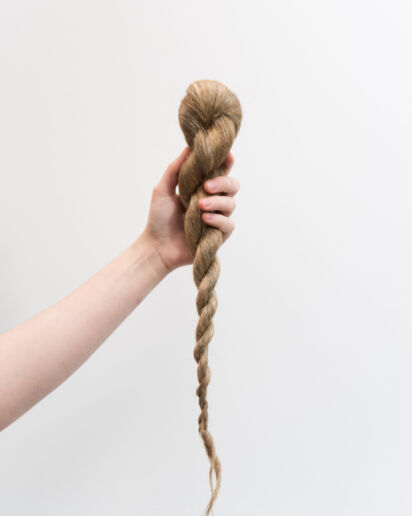
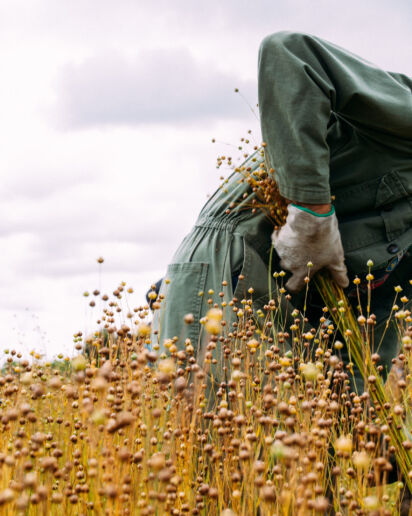
“The Linen Project is our collaborative effort to understand the making of local textiles and experience the beauty of it. This is a shared journey where we, learning by doing, rediscover our relationship with nature and each other.”
WILLEMIEN IPPEL, CO-FOUNDER CRAFTS COUNCIL NEDERLAND
———————————————————————–
THIS ALSO MIGHT BE INTERESTING FOR YOU
Fabric Trends Spring.Summer 25 – Part V
9. April 2024
At the heart of this collection is Q-Cycle by Fulgar™, a revolutionary approach that incorporates end-of-life tires into the mass balance technology used during its production, minimizing waste and giving a new life to materials that would contribute to environmental challenges.
BLUEZONE Signature Spring.Summer 25 – Part II
4. April 2024
The designer has given free rein to his creativity to develop his vision of high quality, making increased use of ISKO's Ctrl+Z material science.
BioBase – Sustainable innovations
2. April 2024
The project targets the establishment of biobased polymers in the textile industry, demonstrating their full potential.
Cooperation is key - Sustainable Innovations
Local and recycled: Enschede Textielstad was founded in 2013 by Annemieke Koster to create responsibly produced fabrics from recycled yarns and local raw materials such as flax, hemp and wool for apparel and interior textiles. To keep the supply chain as short and regional as possible, one of the main focuses of the concept is to develop smart and circular uses of waste streams and local resources – for example, Dutch wool. Its quality is not good enough to make clothes from, and to date there has been no viable business model in sight for this resource – so it has been burned. However, what is not good enough for clothing may be absolutely sufficient for other purposes, so Enschede Textielstad now weaves fabrics from the wool that are ideal for upholstered furniture.
The same applies to linen – there have been no projects with economic viability in the Netherlands to date. To change this, The Linen Project was founded in 2019 as an initiative of Crafts Council Nederland and ArtEZ University of Fine Arts (see feature in also this Sustainable Innovations issue). In 2020, the two projects began a collaboration based on division of labor, with Enschede Textielstad acting as a weaving mill for flax cultivated in the Netherlands.
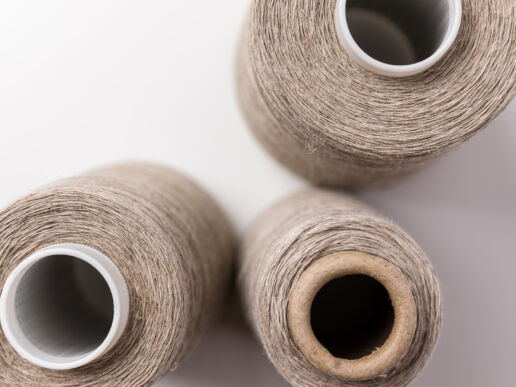
“We are bridging the gap between mass production and laboratory scale testing. We do so with a focus on sustainable, local and social production on the most innovative machine the industry has to offer. With our investment and expertise we help the industry move forward by testing new materials in early stages of development.”
ANNEMIEKE KOSTER, FOUNDER ENSCHEDE TEXTIELSTAD
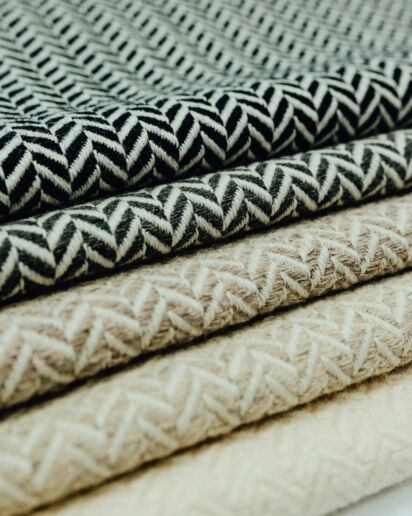
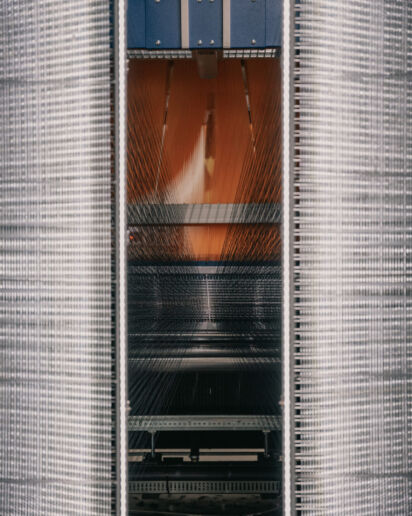
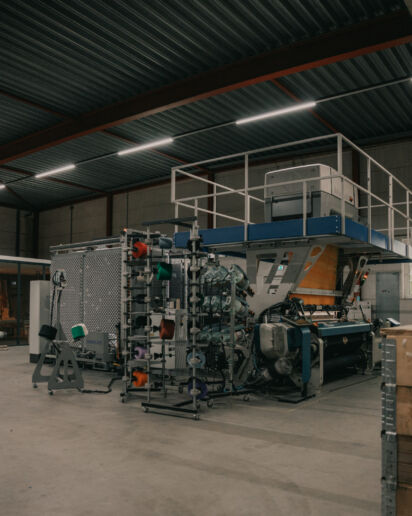
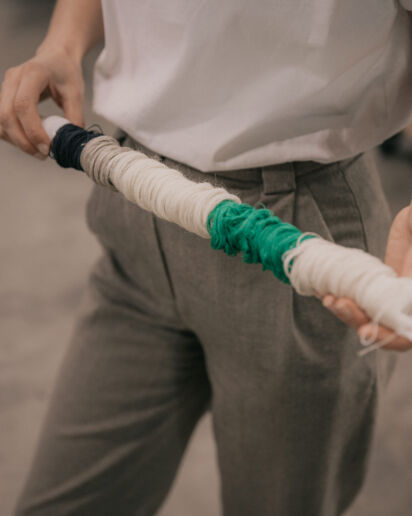
This collaboration is accompanied by a new cooperative business model: instead of simply selling the fabric by the meter to customers, a subscription model was designed for The Linen Project. Customers become part of the supply chain and share responsibility for the process of harvesting, weaving and finishing. The fabrics are then sold as “lots”, with all the imperfections as these are part of the subscription.
———————————————————————–
THIS MIGHT ALSO BE INTERESTING FOR YOU
Fabric Trends Spring.Summer 25 – Part V
9. April 2024
At the heart of this collection is Q-Cycle by Fulgar™, a revolutionary approach that incorporates end-of-life tires into the mass balance technology used during its production, minimizing waste and giving a new life to materials that would contribute to environmental challenges.
BLUEZONE Signature Spring.Summer 25 – Part II
4. April 2024
The designer has given free rein to his creativity to develop his vision of high quality, making increased use of ISKO's Ctrl+Z material science.
BioBase – Sustainable innovations
2. April 2024
The project targets the establishment of biobased polymers in the textile industry, demonstrating their full potential.
Circularity is key - Sustainable Innovations
From old to new: Pre-Loved is a biotextile concept in which new products are created from used post-consumer textile waste. In a unique production process, low-quality mixed textile fibres are transformed into a robust, paper- and leather-like material that is suitable for a variety of applications – from fashion to interior design and product design.
Designer Sarmite Polakova gives waste a new meaning in this context: instead of something negative, she perceives it as a surplus recyclable material that can, however, at the same time be a resource for the creation of something new – the focus here is on circularity: it is about the recyclability of the material; a product made by Studio Sarmite can be dissolved at the end of its life and the textile fibres can be used for the next production cycle. The lightweight material displays a processuality, revealing a new aesthetic and highlighting each previous life of a worn garment through nuances of colour and texture. It can feature marble-like patterns as well as hues accentuated by natural dyes.
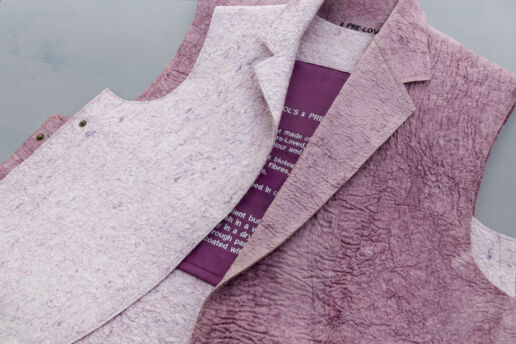
“The term ‘waste’ should be seen as a surplus rather than something negative and thus can be turned into a resource for creating something new.”
SARMITE POLAKOVA
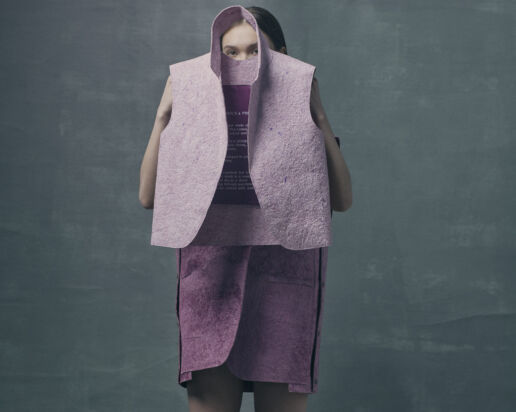
Cooperation is key – first Sarmite Polakova of Studio Sarmite teamed up with colour specialist Roua Alhalabi of Roua Atelier. The result of the collaboration is a groundbreaking dyeing method for blended fabrics based on natural pigments. The dyeing process is integrated into the production of the organic biotextiles and leads to a unique design language that gives room for surprising patterns and a certain playfulness. Moreover, the two designers have found a way to extract the dye during the recycling process of the textiles and use it for the next life cycle without the need for additional resources.
“Nature gives us a lot of resources that can be used in the natural dye industry. In fact, everything around us can be used to make color and support new materials. By using eco- riendly materials, we can become more sustainable and make a good impact.”
ROUA ALHALABI
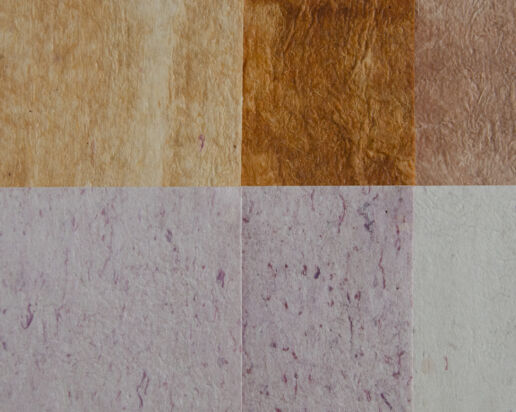
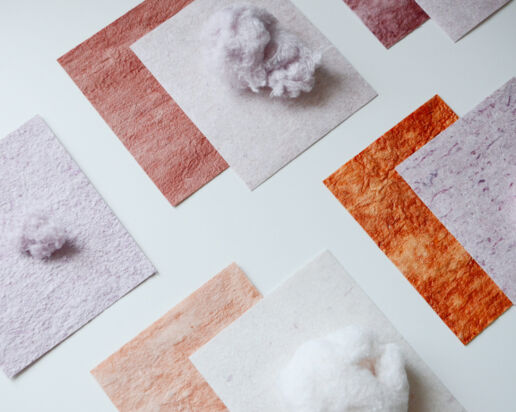
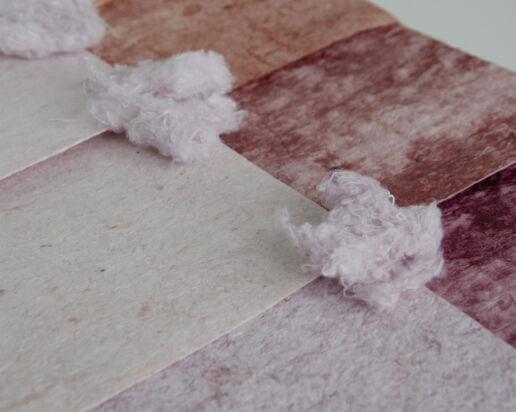
———————————————————————–
THIS ALSO MIGHT BE INTERESTING FOR YOU
Fabric Trends Spring.Summer 25 – Part V
9. April 2024
At the heart of this collection is Q-Cycle by Fulgar™, a revolutionary approach that incorporates end-of-life tires into the mass balance technology used during its production, minimizing waste and giving a new life to materials that would contribute to environmental challenges.
BLUEZONE Signature Spring.Summer 25 – Part II
4. April 2024
The designer has given free rein to his creativity to develop his vision of high quality, making increased use of ISKO's Ctrl+Z material science.
BioBase – Sustainable innovations
2. April 2024
The project targets the establishment of biobased polymers in the textile industry, demonstrating their full potential.
Next Generation Material - Sustainable Innovations
Bio-based, locally produced, on demand: that’s MYCOTEX by NEFFA – a flexible material whose properties lie somewhere between leather, plastic and artificial leather. Production takes place in three steps: First, customisable and/or recyclable forms are created in an automated 3D design process. With the help of liquid fermentation, innovative materials are produced – the technique works for mycelium, but is also suitable for other biomaterials. In the end, the final textiles are produced by robotic applications without any weaving, cutting or sewing. In this way, the modelling process is similar to the injection moulding process – except that only natural materials are used instead of plastics.
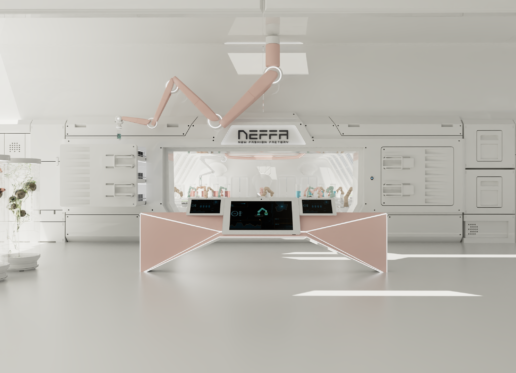
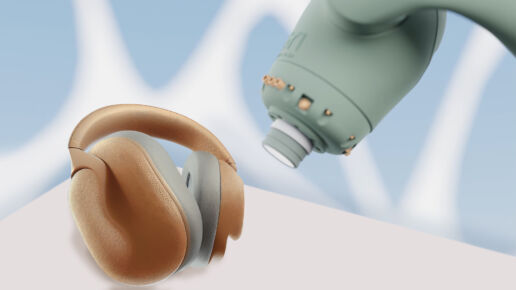
In leather production, the most resource-intensive factors are the land required for animal husbandry, the consumption of water for tanning, the energy required and the CO2 emissions. It is precisely in this production chain where MYCOTEX comes into play: Resource-saving robotic applications can save 10 to 30 percent of waste, and in addition, the production of materials and products takes place directly on site, so there are no emissions for transport. The textiles are biodegradable and can even be composted at home.
More than Mycelium: At the beginning of the project, founder Aniela Hoitink focused in particular on the material MYCOTEX. Within the last three years, this has developed into NEFFA, a completely automated manufacturing method for different types of biomaterials. NEFFA stands for New Fashion Factory. The innovative system is based on automation, can be recycled and offers unlimited freedom of design. The patented process offers unprecedented design freedom to create silhouettes and textures that would never have been possible with traditional manufacturing methods and creates a local and completely transparent process that can be adapted to constant changes. For the textiles of tomorrow.
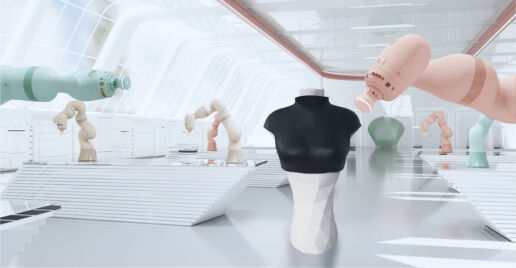
“The fashion and textile industry is working on steps to improve: material innovation, better dyeing processes, a reduction of water, quick fixes that are needed right now. This will not be enough in the future. We need a big step to transform the industry. And we need it to be local, with a better working environment and without waste.”
ANIELA HOITINK
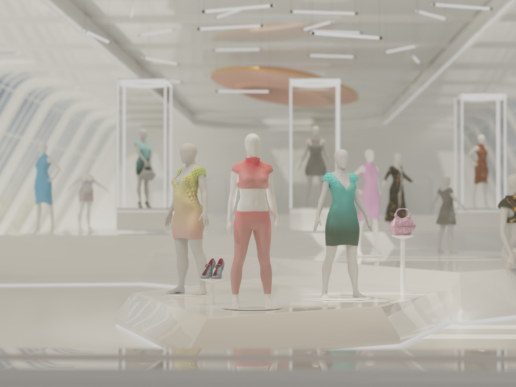
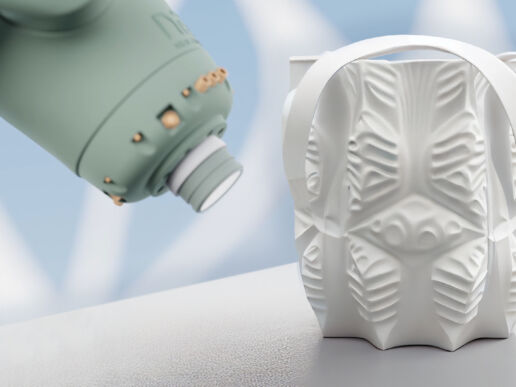
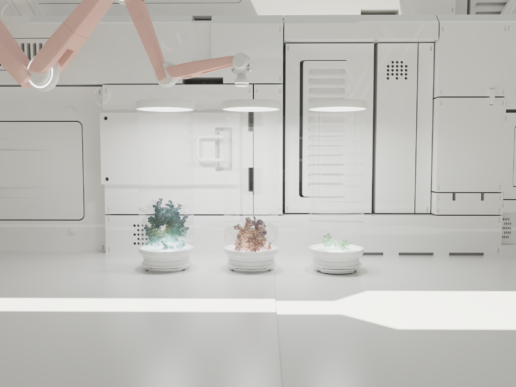
———————————————————————–
THIS ALSO MIGHT BE INTERESTING FOR YOU
Fabric Trends Spring.Summer 25 – Part V
9. April 2024
At the heart of this collection is Q-Cycle by Fulgar™, a revolutionary approach that incorporates end-of-life tires into the mass balance technology used during its production, minimizing waste and giving a new life to materials that would contribute to environmental challenges.
BLUEZONE Signature Spring.Summer 25 – Part II
4. April 2024
The designer has given free rein to his creativity to develop his vision of high quality, making increased use of ISKO's Ctrl+Z material science.
BioBase – Sustainable innovations
2. April 2024
The project targets the establishment of biobased polymers in the textile industry, demonstrating their full potential.
Drawn by the sun - Sustainable Innovations
Textiles as witnesses of time: SLOW PATTERNS is a collection by the Berlin studio Meyers & Fügmann that changes over time due to the influence of sunlight. This works by using an unconventional technique that combines the natural and the artificial. In concrete terms, this means that European is woven and dyed in Europe by hand, with the side effect of preserving traditional skills of the European textile industry. The collection combines wool with synthetic yarns. When the textiles are exposed to UV light, the natural dyes fade over time, while the stable synthetic colours retain their shades, changing the materials and eventually revealing delicate patterns.
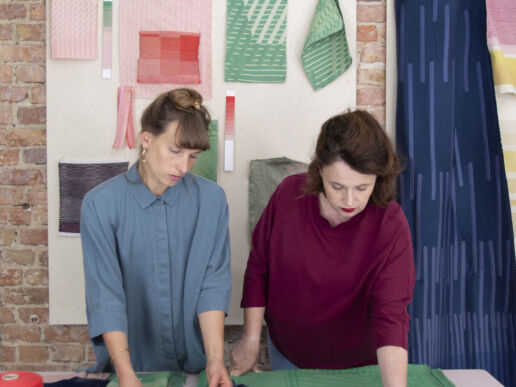
The textiles have the peotic power of tracing time. The changes in the colours make the ageing process visible and make transience a subject of discussion – spiritual as well as material. Seeing the textiles develop creates an emotional relationship, as both the owners and the objects age side by side. The textiles thus reflect and make transience visible. In doing so, they raise questions about physical obsolescence. Instead of connoting these aspects negatively, SLOW PATTERNS encourages us to value the products over their entire lifespan and to accept and celebrate their changes as well as our own.
A sign against fast fashion: the low lightfastness of natural materials is often seen as a shortcoming. Meyers & Fügmann, on the other hand, show with their project how aesthetically natural colours change and that beauty can lie in this process. SLOW PATTERNS thus becomes a plea for the dignity and vitality of natural colours.
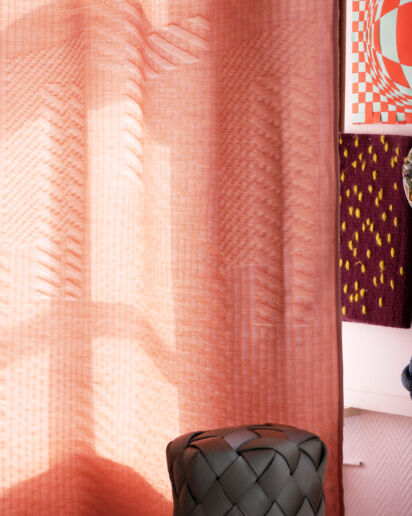
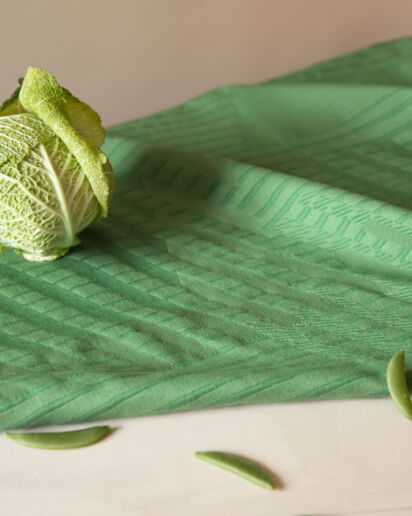
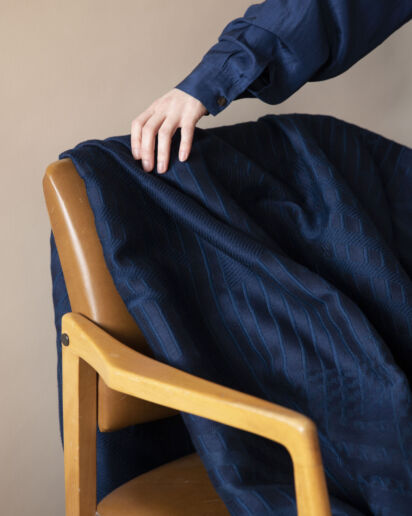
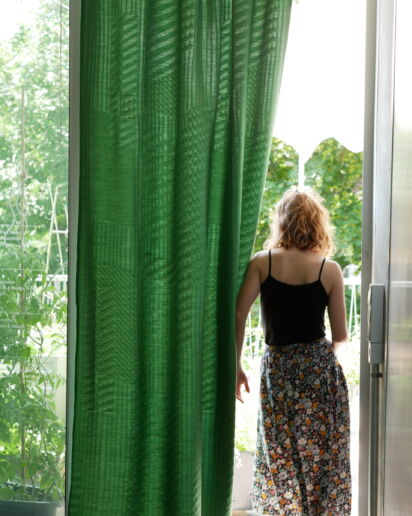
“Lightfastness is a relevant topic for future industries, as natural and recycled dyes and fibers demonstrate lower lightfastness.
Our approach is to show the liveliness of natural colours and romote them as a real alternative to synthetic dyes, opening markets for less durable colours. The aging process is designed into the product in order to foster a debate about slow consumerism and the relationship we have with our belonging.”
SARAH MEYERS AND LAURA FÜGMANN
———————————————————————–
THIS ALSO MIGHT BE INTERESTING FOR YOU
Fabric Trends Spring.Summer 25 – Part V
9. April 2024
At the heart of this collection is Q-Cycle by Fulgar™, a revolutionary approach that incorporates end-of-life tires into the mass balance technology used during its production, minimizing waste and giving a new life to materials that would contribute to environmental challenges.
BLUEZONE Signature Spring.Summer 25 – Part II
4. April 2024
The designer has given free rein to his creativity to develop his vision of high quality, making increased use of ISKO's Ctrl+Z material science.
BioBase – Sustainable innovations
2. April 2024
The project targets the establishment of biobased polymers in the textile industry, demonstrating their full potential.
Smart Knitting - Sustainable Innovations
When the programmers of KNITWEAR LAB teamed up with 3D software specialists, a completely new idea for more sustainable, cost-efficient and design-oriented pattern development and knitwear production emerged. By combining virtual and material knitting, it is possible to reduce the massive waste during the pattern and pre-production phase in the industry and to further advance knitwear development with the help of smart technologies. Knitting on a new level: The revolutionary aspect of the method is the combination of innovative-virtual 3D technology with classic-conventional knitwear. The virtual design can be implemented exactly as you see it, while the actual knitted fabric that you perceive haptically and visually can be virtualised exactly as it was knitted.
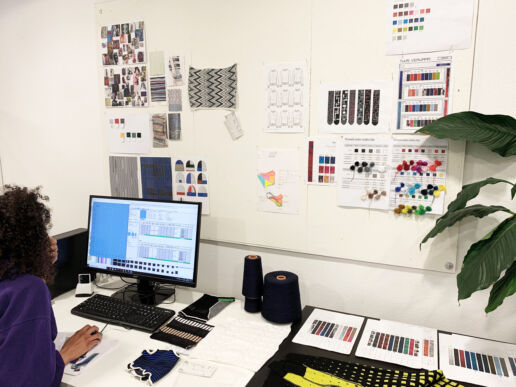
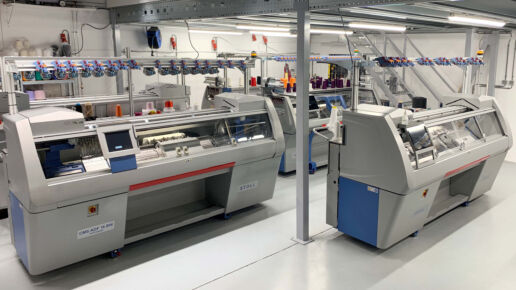
When knitting meets 3D software, there are several advantages. Designs can be improved and adjusted at an early stage in terms of design process or colouring to efficiently create virtually producible and realistic prototypes. In addition, the combination of knitwear and digital visualisation offers enormous savings potential: the waste of materials, resources and transport can thus be reduced. Furthermore, the fits for sampling and production are more accurate through Virtual Knitting, which is why, ideally, fewer samples need to be produced. Last but not least – the method significantly shortens the time from design to market and enables early commercial validation of the products, thus offering a win-win in the aspects of economic and ecological sustainabilit.
“A revolutionary method for industrial knitwear development:
A connection between virtual and material(physical) knitting, which creates a whole new world for sustainable, cost-efficient and design-driven sample development and knitwear production. KNITWEAR LAB will reduce the massive waste during the sample and pre-production stage in the industry with the use of extensive knitwear knowledge of the programmers of KNITWEAR LAB combined with the newest 3D software.”
Cherish Brouwer, Co-Founder & Designer Knitwear Lab
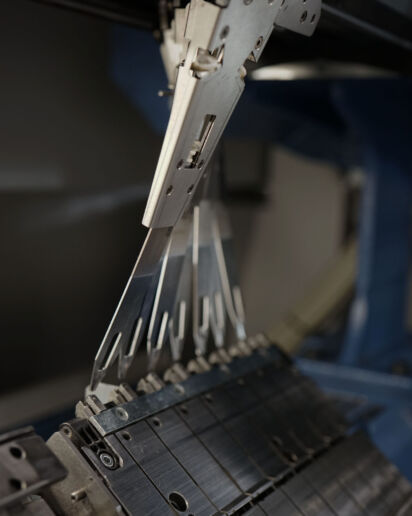
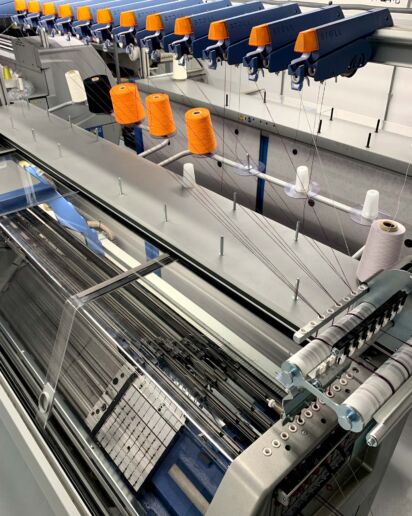
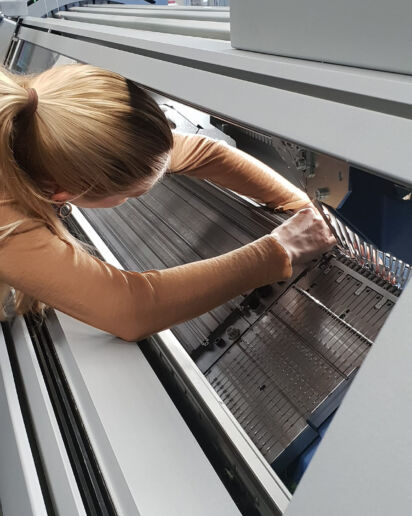
———————————————————————–
THIS ALSO MIGHT BE INTERESTING FOR YOU:
Fabric Trends Spring.Summer 25 – Part V
9. April 2024
At the heart of this collection is Q-Cycle by Fulgar™, a revolutionary approach that incorporates end-of-life tires into the mass balance technology used during its production, minimizing waste and giving a new life to materials that would contribute to environmental challenges.
BLUEZONE Signature Spring.Summer 25 – Part II
4. April 2024
The designer has given free rein to his creativity to develop his vision of high quality, making increased use of ISKO's Ctrl+Z material science.
BioBase – Sustainable innovations
2. April 2024
The project targets the establishment of biobased polymers in the textile industry, demonstrating their full potential.
The clothing of the future - Sustainable Innovations
Every year, more than 120 million tons of textile fibers are processed worldwide – more than a third of them are petroleum-based synthetic fibers, i.e. resource- and emission-intensive, causing waste and polluting the environment. An alternative is needed. But: Where do the fibers for the clothes of the future come from – are textiles that grow on trees or shoes that come from the sea a pure utopia?
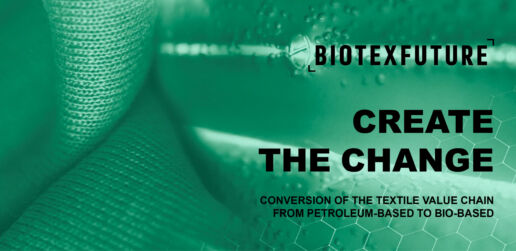
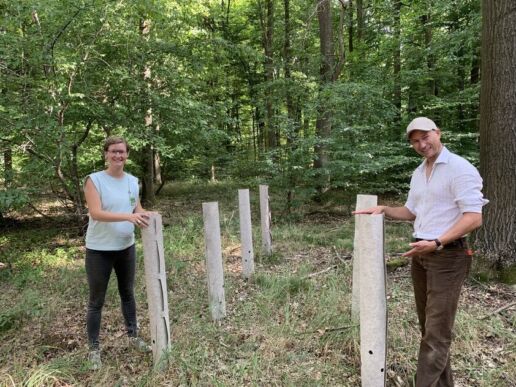
As part of the BIOTEXFUTURE Germany innovation space, leading research teams from the textile sector and industry are driving forward the development of bio-based textiles. Their aim is to accelerate the structural change towards a bioeconomy in this sector. On top of that, the ambition is also to find alternatives and solutions for some of the most important challenges currently facing the textile industry – from impregnation and dyes to elastane alternatives as well as textile recycling and microplastic filling in sports fields. On the research side, one of the world’s leading Institutes for Textile Technology at RWTH Aachen University (ITA) is responsible together with the Chair of Technology and Organisational Sociology (STO). For the industry, this part is taken over by the global company adidas AG.
Bye bye, plastic! The long-term goal is to be able to replace virgin polyester as a raw material. In concrete terms, this means that BIOTEXFUTURE is working in ten different projects to convert the individual steps along the textile value chain from petroleum-based to bio-based in the future plus to make the basic research carried out for this purpose accessible to the broad masses as quickly as possible. From algae to artificial turf to fungi: the idea behind the project ALGAETEX, for example, is to use biopolymers obtained from algae for use in textiles. BioTurf is about the development of an artificial turf structure made of bio-polyethylene that is at least as efficient as the petroleum-based materials used so far while being recyclable and without microplastic filling at the same time; the Fungal Fibers project is about the production of bio-based textile fibers from a promising fungusbased production process for the sports and medical sectors.
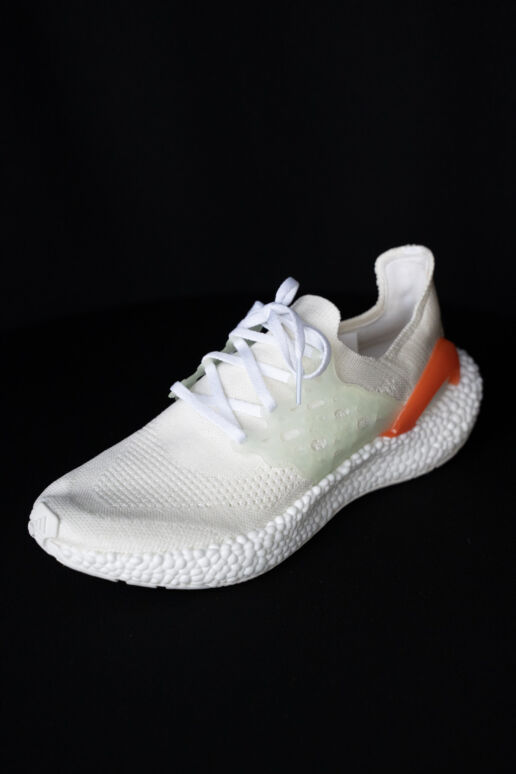
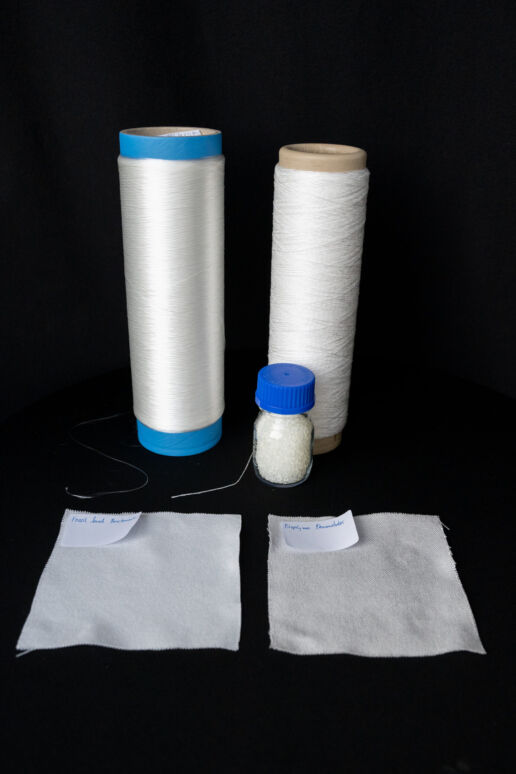
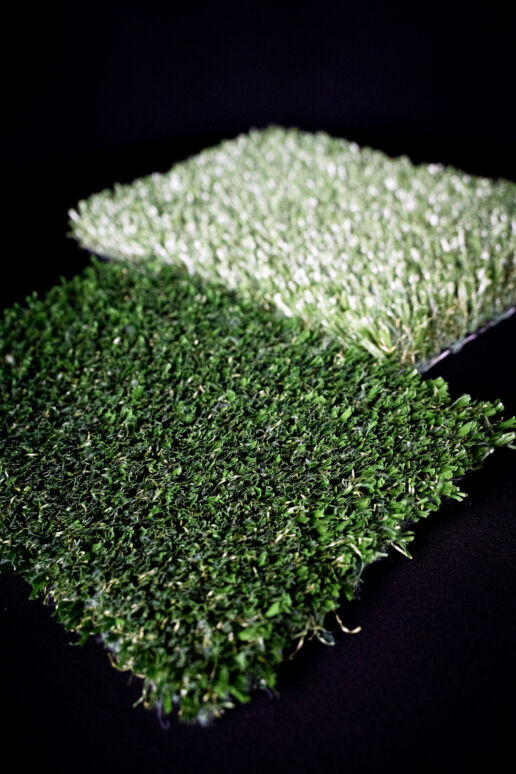
“The textile industry is not yet sustainable and burdened with massive environmental problems. Natural raw materials and ew textile technologies are a great opportunity for the future to meet the numerous challenges of the textile industry. This concerns the replacement of petroleum for polyester roduction by biological materials such as algae or fungi as well as bio-based coatings, dyes or completely new manufacturing processes. However, the major challenges of the textile sector can only be solved in close cooperation between research and industry. This is why we are committed to the BIOTEXFUTURE innovation space and would like to attract numerous new supporters in the coming years.”
Nicole Espey, Project Manager BIOTEXFUTURE
———————————————————————–
THIS MIGHT ALSO BE INTERESTING FOR YOU:
Fabric Trends Spring.Summer 25 – Part V
9. April 2024
At the heart of this collection is Q-Cycle by Fulgar™, a revolutionary approach that incorporates end-of-life tires into the mass balance technology used during its production, minimizing waste and giving a new life to materials that would contribute to environmental challenges.
BLUEZONE Signature Spring.Summer 25 – Part II
4. April 2024
The designer has given free rein to his creativity to develop his vision of high quality, making increased use of ISKO's Ctrl+Z material science.
BioBase – Sustainable innovations
2. April 2024
The project targets the establishment of biobased polymers in the textile industry, demonstrating their full potential.
High-tech connection meets low-tech reconnection
Reflecting on the past and looking towards the future – what lies ahead in the sustainable fashion and innovative design industry?
There are two significant factors driving the evolution of the industry at present. Let’s begin with the first topic, which I refer to as the ‘process runway’. On one hand, the term ‘runway’ refers to the well-known fashion runway or catwalk. On the other hand, we can observe the growth of numerous companies and designers with a sustainable focus, who are maturing and becoming more professional, preparing themselves to connect and deliver. From this perspective, it becomes clear that companies and designers understand the need to continuously improve every step of the supply chain, striving for constant enhancement – what I call the process runway.
Could you elaborate on how these labels are improving and changing their production practices?
Certainly. Let’s delve into the example of Knitwear Lab, one of the exhibitors. They demonstrate how one client’s interactions have led to improved production and enhanced quality in several ways. In the past, their manufacturing process began with a rough sketch or digitally drawn idea. Subsequently, one single idea was prototyped multiple times, thus resulting in numerous samples, requiring significant time and numerous adjustments. This process was highly time and material-consuming. To streamline this process, Knitwear Lab embraced digitization. They created a variety of avatars with different size measurements and body types, providing a perfect digital replica for every body shape. With this approach, they can now experiment with more complex designs and experience the implications of different designs and special materials across all sizes, from XXS to XXL without producing supervacaneous samples, thus waste. This is crucial since the details of a finished garment can appear differently on various body sizes. Hence, they first create a digitally perfect fit and high-quality product. Once flawless digitally, it is then manufactured in reality. The benefits are numerous: customization, time and material savings, and cost efficiency – all essential sustainable considerations. Additionally, they can incorporate quality aspects. Cause after all efficient work processes and resource conservation remain significant challenges within the industry.
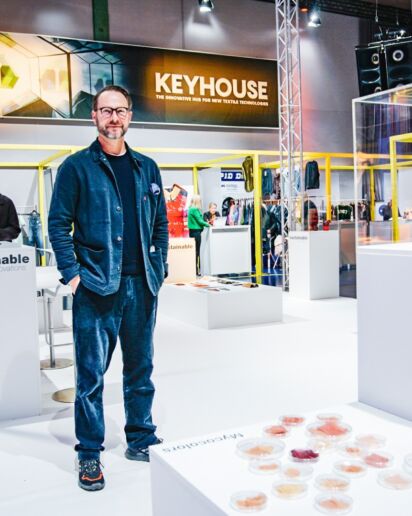
Simon Angel
So, they transitioned from specialized skills to a broader scope?
Exactly. The progression follows this trajectory: initially, we have design studios focusing on their core strengths, on what they excel at. Simultaneously, they are eager to explore avenues for improving the customer journey, sustainability aspects, sourcing or design. It entails broadening their scope of responsibilities and possibilities. Within this transition lies immense potential, but it also presents several challenges. This is the nature of pursuing a goal – people need to collaborate, assume responsibility, and expand their horizons to harness the full potential and become more sustainable and efficient.
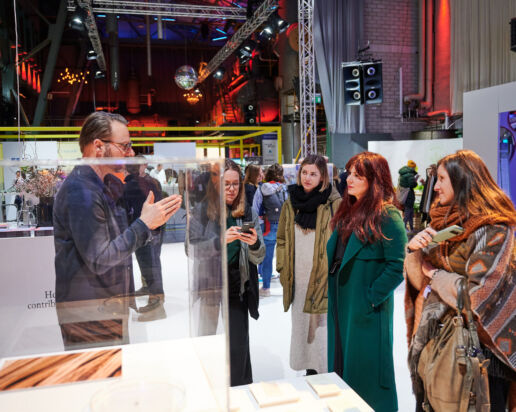
You mentioned another direction at the beginning. Could you elaborate on that?
The other topic revolves around reconnecting with craftsmanship. There is a growing focus on our human nature, on experiencing materials and products through touch, smell, taste… We are redirecting our attention towards engaging our senses. This year, we have exciting projects that facilitate this connection, inspiring people to participate in the knowledge and production processes. To be honest, this craving for tangibility and the opportunity to get hands dirty or experience materials is not limited to the production and design chain alone; it is also a fundamental human need. In the years to come, I am confident that there will be a significant resurgence in reconnecting and rediscovering the purity and authenticity of things.
Are there any synergies, or do these topics merely coexist?
On one hand we have high tech connection using digital advices for improvement and more sustainability, on the other hand low tech reconnection refocusing on craftmanship and human aspects with feeling of the senses. What they do have in common is the very important fact, that without collaboration, nothing would be the same. Studio Sarmite collaborates with Roua Atelier, Crafts Council works with Enschede Textielstad, Meyers & Fügmann cooperate with other designers. If we realize what we and others are doing, we can connect with collaboration and create something even bigger. That is what we experience ourselves at MUNICH FABRIC START: we collaborate a lot as well, for example with BiotexFuture, Berlin Design Farm and Crafts Council. We try to be a partner in acknowledging, introducing and togetherness with other partners to create something bigger in joint forces.
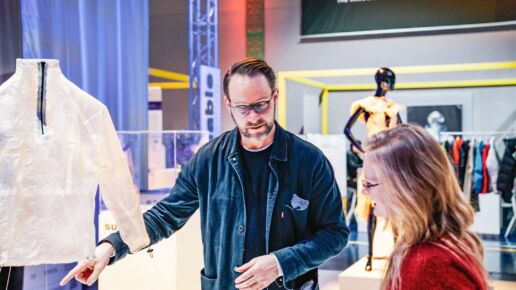
GET INFORMED & INSPIRED AT THE MUNICH FABRIC START
IN THE SUSTAINABLE INNOVATIONS AREA AT KEYHOUSE – H5!


